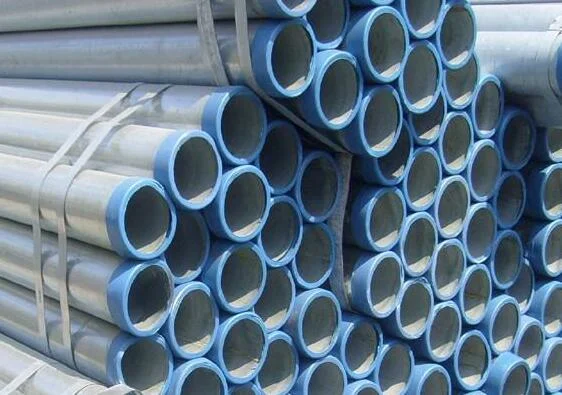How galvanized steel pipe is galvanized?
The main difference between different hot-dip galvanizing methods is how to activate the surface of the tube after acid leaching to improve the quality of galvanizing. Dry and redox methods are mainly used in production, and their characteristics are shown in the table. Galvanized steel pipes can be classified into hot-dip galvanizing and electro-galvanizing. Hot-dip galvanizing includes wet, dry, lead-zinc and redox processes.

The galvanized steel pipe has a galvanized surface that is smooth, compact and uniform in structure. Has good mechanical properties and corrosion resistance. The consumption of zinc is 60%-75% lower than that of hot-dip galvanized steel. The galvanizing process is more complicated, but it must be used for single-sided coatings, double-sided coatings of different thicknesses on the inner and outer surfaces, and thin-walled tubes.
Advantages of galvanized steel pipe: good temperature and pressure resistance, wide application range; good rigidity, suitable for open clothing; easy access to raw materials, complicated processing technology, immature in petrochemical technology, so equipment technology is more complicated .
We know that there are three types of galvanized pipes: cold galvanized pipes, cold galvanized pipes and hot galvanized pipes. The first two were eliminated due to backward technology. Hot-dip galvanized steel pipe has stable performance and reasonable price, and has been widely used in pipelines.
The cold-galvanized pipe is galvanized and has a small amount of galvanizing. It is only 10-50g/m2. Its corrosion resistance and hot-dip galvanized pipe are not galvanized than ordinary hot-dip galvanized pipe manufacturers. Only those small enterprises with old equipment are old. Galvanized in small factories and at very low prices. It is forbidden to use in water supply pipes and gas pipelines.
Cold-galvanized steel pipe, zinc layer and steel pipe base separation layer, thin zinc layer, simple adhesion on the surface of steel pipe is easy to fall off, so corrosion resistance is very poor, it is forbidden to use in building residential.
Hot-dip galvanized steel pipes are manufactured using a new hot-dip galvanizing process. The steel tube reacts chemically with the molten zinc solution to form a compact zinc-iron alloy layer, which is combined with the pure zinc layer and the steel tube matrix. Therefore, the hot-dip galvanized steel pipe is highly resistant to corrosion.






